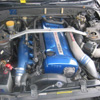RB26Dett lightweight Font Pulley experiment
Announcements
-
Similar Content
-
Latest Posts
-
so once I wire in a boost sensor, it'll stop the engine cut off? I found out which pin in the ecu/harness it is, I just have no idea how to actually connect it. if you have any advice on how to actually do that, please link me a video or something with pictures at least lol.
-
Keen on this one, havent been to an SAU cruise before, but what is the average turnout like?
-
RBF660 doesn't meet DOT5.1 as it is too thick. DOT5.1 has a very low viscosity requirement compared to DOT3 or 4. (Dot5.1 must be half as "thick" as DOT4) It would also be a big indicator for anyone using that fluid in extremely cold weather to possibly look to swap for something in the DOT5.1 range.
-
Here is as close as we got to a direct comparison(3 vs 4inch exhaust), a tickle more boost, which I am sure was in part due to the exhaust. Made 790 on more boost.
-








Recommended Posts
Create an account or sign in to comment
You need to be a member in order to leave a comment
Create an account
Sign up for a new account in our community. It's easy!
Register a new accountSign in
Already have an account? Sign in here.
Sign In Now